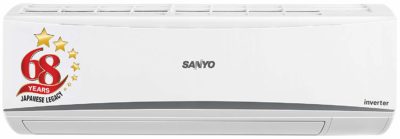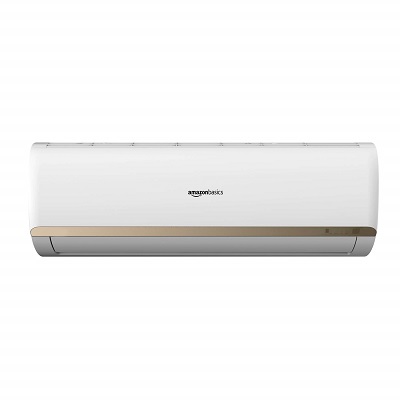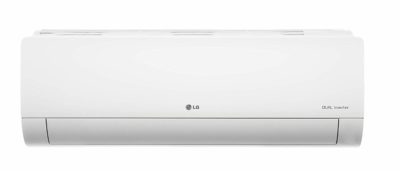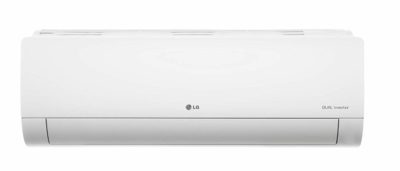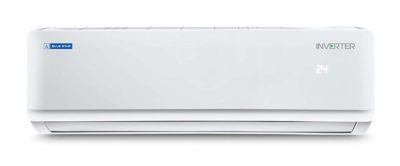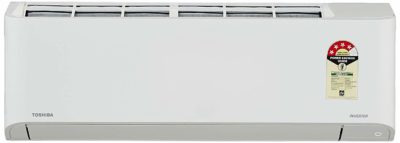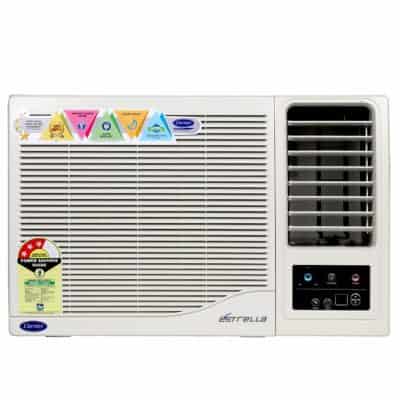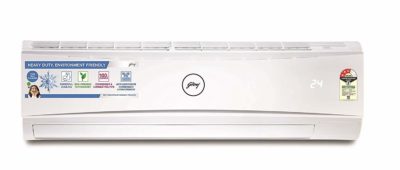Best Energy Efficient Air Conditioners Buying Guide
Energy-efficient air conditioners are fast becoming a staple for modern homes and offices due to their unparalleled ability to keep us as comfortable and save energy as well.
An additional miracle they manage to pull off is to run at an incredibly lower cost, making them remarkably practical to run on a daily basis.
However, though they are some of the most sought after appliances in today’s homes and electronic market, they are not exactly the simplest products to buy it can be quite difficult to make the final decision.
This comprehensive guide seeks to be the probable solution to this challenge by providing a detailed account of everything you need to know about air conditioners before making any buying decision.
The subject will be tackled in two main sections. The first section will look at how these systems work, the key components (in layman’s terms), and the critical factors everyone needs to consider before buying AC.
Lastly, we’ll set out on an exploration of Best Energy Efficient Air Conditioners on the current market.
9 Best Energy Efficient Air Conditioners in India
| Product (Best Brands) | Best Price |
|---|---|
Top-Notch Energy Efficiency | |
Beautifully Crafted | |
Great Capacity And Range | |
Ample Capacity | |
Durable | |
Highly Energy Efficient | |
Great Range | |
Superior Performance |
How do Energy Efficient Air-Conditioners work?
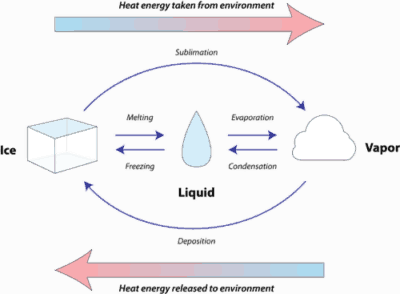
Energy-efficient air conditioning systems are based on the same physical principle as refrigerators, commonly known as “phase conversion”. The principle states that the conversion of a gaseous substance to liquid form absorbs heat from the surrounding.
Air conditioners take advantage of this by subjecting liquids known as refrigerants through a process of evaporation in order to absorb heat from the surrounding room air.
Upon completing the process, the gaseous refrigerant is reconverted to liquid form through another process called condensation.
Refrigerants are ideal for this process because they can change between gas and liquid forms at very low temperatures, which is a critical property for the sustenance of the system.
Air from the room is propelled to and from the ACs coils by fans and a series of tubes or ducts. Upon contact with the system’s coils, the heat from the room air is absorbed, as the refrigerant is evaporating.
To continue cooling the remaining room air, the air con’s refrigerant has to be changed back to liquid. This is possible through a second phase which involves subjecting the gas refrigerant under intense pressure, which generates more heat which is then directed out through the second series of coils.
The significant loss of heat means the gas molecules start to collide more slowly as they get closer together and form more bonds. This recreates the liquid refrigerant which is then redirected to start another process.
Getting rid of unwanted heat from room air is not the only function of air conditioners. Modern machines come with extra features to further condition the air for the best possible experience.
These include filters, dehumidifiers, purifiers, and antibacterial coating. In fact, the cooling effect has a dehumidifying capacity in the sense that removing some heat leads to a reduction of moisture from the air.
Key Components of Air Conditioners
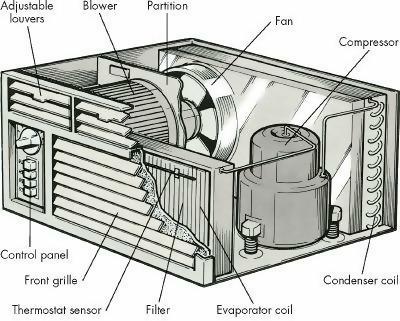
Having looked at the general principle underlying the air conditioner’s function, let’s get a little closer and see how the different parts come together to complete the process.
The following is a round-up of the components and what they do in general terms.
- Evaporator: It holds the liquid refrigerant.
- Condenser: Conduct heat from the evaporator.
- Expansion valve: Dictates the flow of the refrigerant towards the evaporator.
- Compressor: Subjects the gaseous refrigerant under intense pressure to create more heat.
In functional terms, ACs can be split into cold and hot parts. The evaporator and first fan, which directs room air to and from the evaporator, occupy the cold part. The compressor, condenser, and the second fan which directs the hot air outside make up the hot part.
The process starts in the evaporator where the refrigerant liquid expands and converts into gas due to an excessive drop in pressure. As explained above, the gas molecules absorb heat from the surrounding room air thus making it colder.
Upon conversion, the gas is led into the compressor, which pressurizes the gas further. This causes the molecules to move and collide at a faster rate, thus leading to the creation of more heat.
Notice that as the gas molecules collide, there is more pressure, but the collisions cause them to lose energy in the form of heat.
This causes the gaseous refrigerant to start taking a liquid form. Meanwhile, the heat from the gas and room air is conducted to the air from outside by the condenser and blown out through the second fan and duct system.
The resultant fluid is then directed back to the evaporator, while the valve is controlling the rate of flow.
Apart from the main components as discussed above, the AC incorporates other parts such as sensors, and timers which are basically there to keep the system as smooth and well-timed as possible.
Another key point to note at this juncture is that there is a variety of setups associated with ACs, and these setups determine the type of the conditioner in question.
While some conditioners stack all the key parts in a single panel, some split the components into two units (indoor and outdoor). This is where the concept of Window and Split air conditioners comes in.
Split ACs differ from Window ACs in the sense that while the latter has its components in one unit, the former comes in with an indoor and outdoor unit. In general, the indoor unit holds the evaporator and the control interface while the outdoor unit holds the rest of the key components.
Split systems generally offer greater efficiency and are usually more elegant and packed with extra features.
Split conditioners are also critical when it comes to bigger applications such as apartment complexes and other large buildings.
In these settings, it’s not unusual to see the expansion valve and evaporators coil in a special propeller or furnace. As it is in small scale units, the propeller acts as a fan that directs room air over the coils.
The major difference is that these systems tend to incorporate a more extensive network of ducts to cool separate rooms efficiently. The outdoor unit is also commonly called the condensing unit.
A prominent feature in these cases is a long spiral coil which is the condenser. It also features the propeller, which directs atmospheric air over the coil and the compressor.
From this, you can easily appreciate that split and window air conditioners are essentially the same except for the general arrangement and capacity.
Huge buildings such as large apartments and commercial buildings may render split systems unsuitable due to the challenges they pose to the installation process, especially when it comes to piping.
For example, the general design and a large number of rooms make the process of duct installation overly complicated. This common challenge led to the invention of a variant of split air conditioning systems known as the chilled water system.
In the case of chilled water systems, all the key components are placed outside. The unique aspect of the system is that it uses cooled water as a means of extracting heat from the room air.
In this case, the water is cooled to around 7.5 Degrees Celsius. Upon cooling, the water is then directed to different rooms that have their cooling hubs and fans.
The water ducts and the indoor system function in the same way as the regular air conditioner, with the water coils as evaporators. This is a highly flexible system as there is virtually not much limitation as long as the building has enough insulation.
Energy Ratings
Energy-saving capacity is critical to air conditioner’s functionality for an obvious reason: it is directly correlated to how much you spend on your air conditioner in the long run.
A number of efforts have been made by the scientific community to come up with standard ways of measuring how different efficient products are, in order to allow consumers to make safe and reasonable investments.
This has led to a number of frameworks that are used today, and these include Energy Star Ratings, Energy Efficiency Ratios, Coefficient of Performance, and Indian Seasonal Energy Efficient Ratings.
Energy Star Rating
If you’re around electronics that often, you must have already noticed some devices carrying an Energy Star sticker. The sticker is a government-approved symbol aimed at helping users to recognize products that are cost-effective and environmentally friendly without sacrificing performance.
For any product to be energy star certified, it needs to satisfy a strict set of criteria established by the United States Environmental Protection Agency (USEPA) and the Bureau of Energy Efficiency (In Indian circles).
Air conditioners have their own comprehensive set of criteria based on tests that utilize Energy Efficient Ratios and other related features. After being tested, the product is designated a certain number of stars to provide a general idea of how efficient it is. In general, the greater the number of stars, the better.
For air conditioners, 3 stars are considered standard and good enough for economical general performance. A 5-star rating is considered standard for high performance, devices.
EER
Energy Efficiency Ratio(EER) relates the total amount of electrical energy used in the cooling process, and the total power needed to run the unit. British Thermal Units (BTU) are the units of measurement used to quantify the total energy required for cooling.
By definition, they express the amount of energy required to raise the temperature of 1 pound of water by 1 degree Fahrenheit. In the case of air conditioners, this translates to the amount of energy that the unit can extract from the surrounding room air.
The EER can easily be calculated provided that you are aware of the BTU and wattage associated with the device. In general, an EER value of 12 is deemed efficient, and the higher the value the greater the efficiency.
However, this parameter is a bit limited on its own as it is based on fixed values relating to other important parameters.
For instance, the EER calculation is based on a temperature of 95 degrees Fahrenheit for outdoors, 80 degrees Fahrenheit for indoors, and 50 percent of relative humidity. The EER is also an essential parameter in Energy Star rating tests, as it is used in conjunction with other relevant factors.
Coefficient of Performance (COP)
Coefficient of Performance (COP) relates the total amount of heating or cooling achieved by the system to the total energy used. In other words, it is a ratio of the amount of heating or cooling effect of the system to the amount of energy used.
In this way, the COP qualifies as a valid measurement of air conditioning systems. Like energy star ratings, the greater the COP, the greater the overall performance. When it comes to air conditioning and heat pump systems, the typical COP range is 2-4.
ISEER
A few years ago, energy efficiency in India was mainly described using the Energy Efficiency Ratio (EER). The main challenge was that this method’s calculations are based on specific temperature and humidity conditions.
The Seasoned Energy Efficiency Ratio came in to bring in more accuracy by taking the variations associated with different seasons and conditions into account.
With this in mind, India’s Bureau of Energy Efficiency came up with the Indian Seasonal Energy Efficiency Ratio is a way of rating appliances in India.
It is defined as the ratio of Cooling Seasonal Energy Consumption (CSEC) to Cooling Seasonal Total load (CSTL). CSEC is defined as the total energy used by the unit when it is an inactive mode to achieve a cooling effect. CSTL refers to the amount of heat energy extracted from the air when the unit is an inactive mode within a year.
It can be thought of as the ratio of total cooling achieved by the cooling system in a year to the total quantity of energy used in the same period. The energy efficiency ratings, in this case, are based on the performance of the conditioning systems in India-specific seasons.
Again the higher the rating, the greater the performance. Typical energy efficient conditioners ISEER ratings fall somewhere between 3 and 5.
How to Buy Air Conditioners
By this time, you should at least have a basic idea of how air conditioners function. This is enough for a great foundation when it comes to an understanding of the factors you need to look into before getting into the actual models.
Air Conditioner Types
In addition to split and Window air conditioners, a number of types and subtypes which are adapted to certain use cases exist. However, reverse cycle systems tend to offer a great choice for most homes.
Let’s take a step further and look at each type in light of what makes it different, cost, and ideal use cases.
Split-System
Just to recap, as we’ve already looked at these in a bit of length, they are two-unit machines and have their subtypes. Basic split systems tend to be ideal for areas of up to 60 sq meters, and they usually cost somewhere around INR 20,000 – INR60,000 depending on the make and features.
Multi-Split Units
These can be considered as a subtype of split air conditioners. They have multiple indoor units that work together with a single outdoor unit. However, the additional units come with an additional cost, thus making them generally more expensive than split systems.
Ducted Air Conditioning Systems
These systems are great for larger buildings or homes. A key feature in their structure is a series of tubes that connect the central unit to a number of outlets and sensors placed in multiple rooms. In terms of efficiency, they have an obvious edge over basic split and window systems.
Expectedly, they can be more costly as demonstrated by their usual price range, which is usually above INR50,000.
Window Systems
Basic window air cons are generally great for areas of up to 50 sq meters. As we explored in the previous section, they come in a single panel and are typically mounted on Windows or special holes drilled through the wall.
The typical price range is INR 20,000 – INR 40,000, and they provide a cheaper alternative in cases where split systems are impractical to install.
Portable
The portable AC is a simplified version of the Window air con. It is smaller, housed in a single panel, and mobile enough to be shifted between rooms. However, they still need to be closer to windows or any form of an outlet through which the hot air can be vented.
In terms of capacity, they are short of the firepower of a window or split AC. However, they can be a great option in cases where Window and split conditioners are too expensive or simply impractical to install. They usually cost somewhere between INR10,000 and INR50,000.
Reverse-Cycle Air Conditioners
Air conditioners that fall in this category function as coolers or heaters. This makes them handy devices in a wider range of conditions thus they are often the best place to start for most beginners.
However, they may not always be the best fit especially in regions that are biased towards certain conditions. For instance, high-temperature areas such as those around the equator may need something that offers powerful cooling functionality.
The diversity of types of air conditioners above implies that you need to look at your needs and limitations in order to land the best machine for your needs. Before you move and get the most expensive device you can afford, think of what you need and look for a model that’s better placed to solve the challenges at hand.
Capacity
Capacity is usually defined in terms of the room size the conditioner can effectively handle, and the amount of power it consumes. Using room sizes, you can be able to estimate the kind of power you should look for in watts. Researchers have linked certain wattages to room sizes for reference purposes.
However, always remember that you may need to carry out your own assessment and calculation to come up with the best option possible.
Room sizes of around 20 sq meters or less require an AC with a power rating that falls somewhere between 2 and 2.5kW. The second range is the 2.5kW-6kW, which encompasses ACs that can easily handle room sizes of 20-60 sq meters.
The 5-7kW range consists of more powerful ACs, which can handle room sizes within the 60–80 sqm range. And lastly, there is the 6-9kW range, which can easily handle 80 sq meters.
Tonnage is another common reference parameter used in most AC’s specs list to describe the unit’s power. In general, the greater the value, the greater the capacity. But it’s also prudent to treat this with some caution, as a bigger tonnage value may not necessarily imply the best choice.
A number of factors may influence the size of your ideal air conditioner and these include location, the rooms size, and insulation.
As a rule of thumb, 400 square feet will need at least 1 ton of air conditioning power. Therefore, if your living space’s area falls somewhere around 2000 square feet, you may need a 5-ton air conditioner.
However, as is the case with most standard recommendations, this is nothing more than a guideline as there will likely be other factors to consider. In cases where you’re quite unsure, professional definitely comes in handy.
Noise Levels
The majority of modern split and window conditioning systems can operate quietly without really disturbing the comfort of your home or work ethic.
However, it’s always prudent to look at the noise specifications on the specs list to ensure that you get a machine that isn’t a sting to your comfort or concentration. As it is the case with other equipment or appliances, air-cons’ noise levels are graded based on units of measurement known as Decibels (DB).
As a reference, any machine which operates at 50DB or less is great for noise-sensitive environments such as offices. Those who are rated within the 50-60DB range produce some noise, which is generally acceptable in cases where you can do with a little noise like the kitchen.
Other Features:
Modern air conditioners tend to come in with extra features which are key to your comfort as well as a range of functionality. Let’s explore the key features.
Different Fan Speeds
As key components of the air conditioning unit, fans allow the AC to suck in and release air in an efficient way. Other models allow you to alter the fan speed, which translates into being able to control the rate at which the conditioner carries out its functions.
Multiple Modes
Multiple operating modes help to make the air conditioner more convenient, economical, and versatile. They furnish the user a great way to fine-tune the conditioner to a desired overall effect. Commonly featured modes include the following:
- Eco: This automatically adjusts the conditioner based on the room’s condition. It utilizes sensors which may be part of the main unit or the remote controller.
- Cool: Biases the conditioner towards the cooling effect.
- Heat: Prioritizes the warming effect, especially in cold conditions.
- Dry mode: Gets rid of excess moisture from the air.
- Fan: Disables any other functions except the fans for a cooling effect similar to that produced by a regular fan.
Presence Sensors
These sensors enable the device to detect if there is anyone in the room. The conditioner automatically switches off when there is no one around, and turns it on when an individual is detected.
Some machines add on to this ability by incorporating the ability to channel the air towards the individual to achieve maximum efficiency.
Wireless Connectivity
A good number of newer models incorporate Wifi technology in the system, thus allowing users to control the machine from a wider range of external devices such as phones, tablets, or laptops.
Filters
With the advancement of time, AC’s filtering systems have been evolving towards doing much more than just trapping dust. A number of models now incorporate filtering systems that can take on other materials such as smoke, bad odor particles, allergens, and even bacteria.
Self-Cleaning Tool
This great feature enables the AC to remove trapped particles thus preserving its functional integrity.
Remote Controller
These allow you to set the conditioner from a variety of areas and positions across the room. Great remote controllers should have the usual key qualities and these include large buttons, LED screen, and highly visible button labels or icons.
Top 9 Energy Efficient Air Conditioners
1. Sanyo 1.5 Ton 5 Star Air Conditioner – Top Notch Energy Efficiency
Our last few review moments will be spent on the Sanyo 1.5 Ton 5 Star Air Conditioner, which has proven to be one of the air conditioning highlights since its inception on the market a few months ago.
This Sanyo air conditioner boasts of a powerful functional unit as well a design prowess rarely seen in most models within its price range. Let’s walk through the details.
Design
It’s a split air conditioner with standard indoor and outdoor unit designs. The indoor unit is quite similar to the previous product from Godrej. The top houses an inlet panel with prominent louvers, while as the base accommodates the outlet panel for the processed air.
A simple LED display occupies the bottom right corner for easier visual feedback. The indoor unit is 100cm wide, 23 cm thick and 29 cm high while the outdoor unit measures 78.0 (L) × 24.1(B) × 55.7(H).
- Capacity and room size: 1.5 ton, up to 111-150 square feet.
- Energy efficiency rating: 5 stars, ISEER: 4.6.
- Refrigerant: R32.
- Compressor type: Inverter.
- Functions: Filtration, Purification, Dehumidification.
- Condenser coil material: Copper
- Warranty: 1 year for product, 1 year for the condenser, 5 years for the compressor.
- Powerful: It comes with incredibly high tonnage and a wide range for a conditioner with its price tag.
- Minimal running cost: This is evident in its remarkable 5-star energy rating.
- Reasonable cost: It provides for a lot of functionality rarely seen in its price range.
- Beautifully crafted: The sleek finish and well-built body make it a good fit in a variety of modern home and office settings.
- The display is quite small for a clear view from a distance of more than two meters.
2. Voltas 1.5 Ton 3 Star Air Conditioner – Beautifully Crafted
The Voltas brand comes on stage with this delightfully designed and feature-packed air conditioning unit, which competes with some of the best and most economical units on the market. Like the previous units, it also enjoys an encouraging overall response from the user community so far. Let’s see if these claims are warranted.
Design
The design adopts the standard setup and improves it a little with an ultra-sleek, white, and black exterior, along with a flat frontal surface. The 77(W)x56(D)x54cm(H) frame accommodates an outlet and a set of louvers at the base as the back holds the connection interface for the outdoor unit.
- Capacity and room size: 1.5 ton, up to 110-150 square feet.
- Energy efficiency rating: 3 stars, ISEER: 3.8.
- Refrigerant: R410A
- Compressor type: Inverter.
- Condenser coil material: Copper
- Extra functionality: Air filter, dehumidifier, antibacterial mechanism.
- Warranty: 1 year(product), 5 years for the compressor.
- Powerful: It comes with a high-end tonnage and an estimated area of coverage.
- Great energy efficiency rating: It comes with a standard ISEER and star rating thus ensuring optimal performance at minimal electric energy expenditure.
- Durable: The steel material and sturdy construction promise a lot of structural and functional longevity.
- Multi-functional: Like all great models, the air con is not limited to cooling, as it includes other functionalities such as filtering and dehumidification.
- During lower temperature, the machine makes some sound
3. AmazonBasics 1 Ton Inverter Split AC
It is a 100% copper condenser that provides effective cooling while preventing wear and tear from weather conditions. The AC has received a rating of 3.86 by ISEER and 3 Star BEE Rating with Eco mode. In short, it is energy-efficient.
AmazonBasic inverter split AC has a high-density filter. It provides clean and fresh air to breathe. The AC is suitable for a small-sized room.
- The AC has anti-corrosive golden fin coating
- The unit has auto swing mode for effective cooling.
- It has an R32 Refrigerant.
- The AC has low global warming potential and zero ozone depleting potential
- The unit has an auto-restart feature.
- It has a sleep mode.
- It has humidity control feature.
- The AC has an advanced anti-corrosive golden-fin coating that prevents damages from extreme weather.
- It provides high ambient cooling at 52 degrees celsius.
- The unit has up to 12 fan speed grades for accurate and controlled airflow.
- High airflow volume.
- More useful in high temperature
- It comes with amazing safety features, including self detect any damage or leakage and auto protects itself from damages from weather conditions. In case of any damage, the AC shuts off automatically. It also indicates protection or error code for fast service.
- It is not just an air conditioner; the unit also cleans up almost 80% of the air impurities.
- The AC works well even when there is a high voltage range.
- It comes with a fireproof electric box to prevent internal fire due to electric spark.
- No negative points about the product were observed so far
4. LG 1.5 Ton 5 Star Air Conditioner – Great Capacity And Range
LG air conditioner is known for its great functionality and efficiency. The LG 1.5 Ton 5 Star Air Conditioner provides an excellent choice for those looking to land something that offers a great combination of power, reliability, and design prowess.
This is reflected in an overwhelmingly positive response from the user community so far. Let’s dive into the details.
Design
It is a split air conditioner by design, which comes in with a sleek, all-white, and a curvy indoor unit which measures 330mm (H)×210mm (D)×998mm(W) in terms of dimensions.
The outdoor unit takes a solid steel construction with an all-white outer coating and a fan panel on the frontal surface. It measures 288mm in depth, 545mm in height, and 770 mm in width.
- Capacity and room size: 1.5 ton, 111-150 square feet.
- Energy efficiency rating: 5 stars, ISEER: 4.73.
- Refrigerant: R32.
- Compressor type: Inverter.
- Condenser coil material: Copper
- Extra functionality: Air filtration, Antibacterial Coating, Dehumidification.
- Warranty: 1 year for the whole product, 10 years for the compressor.
- Enhanced capacity: It is one of the highest-rated in terms of power, and can cover a wide range of room sizes.
- Low running cost: It comes with a high energy star and ISEER rating, thus indicating a lower energy consumption which translates into lower electricity cost.
- Versatile: It goes beyond cooling and includes a commendable range of functions such as filtration and dehumidification.
- Durable: It comes in a solid construction which is also built with highly resistant material.
- Relatively pricey when compared to most split ACs.
5. LG 2 Ton 3 Star Air Conditioner – Ample Capacity
LG furnishes another beauty to demonstrate its prowess through a powerful feature set along with all the design amenities typical of any highly esteemed product.
Design
Like the previous LG model, it is a split conditioner that also bears a striking resemblance in both size and general design. The indoor unit comes in a similar construction, which features a curvy frontal panel with the air outlet and associated louvers placed at the base.
The unit measures 998mm in terms of width, and 210mm in-depth, and 330mm in height. The outdoor unit takes the same standard design that holds an outlet panel placed just adjacent to the fan. It measures 870.5 mm in width, 322.5mm in depth and 655 mm in height.
- Capacity and room size: 2 ton, 151-200 square feet.
- Energy efficiency rating: 3 stars, ISEER: 3.72.
- Refrigerant: R32.
- Compressor type: Dual Inverter.
- Condenser coil material: Copper.
- Extra functionality: Air filtration, dehumidification, purification, and antibacterial coating.
- Warranty: 1 year for product, 10 years for the compressor.
- Great coverage and overall capacity: The power rating and estimated room size give it an edge over most machines.
- Economical: Its energy star rating and ISEER indicate a highly energy-efficient device that translates into lower electric energy consumption.
- Durable: The steel material and sturdy construction promise a lot of structural and functional longevity.
- No display on the indoor unit.
6. Blue Star 1.25 Ton 3 Star Air Conditioner – Durable
This presents a more affordable version of the Blue Star model considered earlier. However, though it lacks some extra amenities afforded by the previous model, it still provides for one of the most efficient and ample featured systems on today’s market. Let’s take a look.
Design
Again, the device is a split air conditioner with the standard setup observed in the last five products. Like most Blue Star models, it is covered in a sleek, all-white coating, and has its outflow panel located at the base.
The frontal surface accommodates a LED-lit display to provide visual feedback regarding the key parameters. When it comes to size, the conditioner’s total width measures 802mm while the depth and height measure at 189mm and 297mm respectively.
- Capacity and room size: 1.2 ton, up to 110 square feet.
- Energy efficiency rating: 3 stars, ISEER: 3.7.
- Refrigerant: R32.
- Compressor type: Inverter.
- Extra functionality: Air filtration
- Warranty: 1 year, 1 year on condenser, 10 years for the compressor.
- Efficient: It has a relatively high tonnage rating and can cover a wider range of spaces.
- Lower running cost: It has a three-star rating, which basically implies lower electricity consumption.
- Aesthetic build quality: It is well-built and features a sleek finish, thus making it a good addition to most modern home decors.
- It comes with limited extra features for a device of its price tag.
7. Toshiba 1 Ton 4 Star Air Conditioner – Highly Energy Efficient
Toshiba extends its presence into the world of air conditioners through this solid, efficient, and elegantly designed machine. Let’s dive into the details.
Design
The air conditioner preserves the standard setup but adds a set of outlet louvers on top for greater airflow efficiency. Overall, it is solidly constructed and achieves a decent look through a sleek, all-white coating on the exterior. In terms of size, the machine measures 78x55x29in of width, depth, and height respectively.
- Capacity and room size: 1 ton, up to 111-150 square feet.
- Energy efficiency rating: 4 stars, ISEER: 4.01.
- Refrigerant: R410A.
- Compressor type: Inverter.
- Condenser coil material: Copper
- Extra functionality: Air filtration
- Warranty: 1 year for product, 1 year for the condenser, 5 years for the compressor.
- Enhanced capacity: It comes with one of the highest tonnage ratings and room size ranges, thus promising a powerful performance over a wide variety of room sizes.
- High energy efficiency: It features a high star rating to promise an economical running time.
- Durable: Solidly constructed with highly resistant build material.
- Lack of a display for remote control.
8. Carrier 1 Ton 3 Star Air Conditioner – Great Range
If your setting or circumstances call for a window air conditioner, this model from Carrier Estrella might provide for something similar to an ideal profile. It is known for its reliable system, as well as a set of powerful features for a window air conditioner. Let’s get into the details.
Design
It comes in a standard build of a window air conditioner, where the frontal surface is constituted of two main panels. The right panel holds a control interface placed close to the base, and a set of air outlet louvers.
The left panel holds a larger set of louvers which are part of the air inlet portal. Its dimensions measure at around 430 × 660 × 775 (H × W × D) mm as the weight is placed at 61.5kg.
- Capacity and room size: 1 ton, up to 111-150 square feet/small to medium-sized rooms.
- Energy efficiency rating: 3 stars, ISEER: 4.01.
- Compressor type: Rotary.
- Condenser coil material: Copper
- Extra functionality: Filtration
- Warranty: 1 year for product warranty
- Great capacity for a budget conditioner: Though it evidently comes at a lower cost than most machines considered so far. It does afford a powerful tonnage for small to medium rooms.
- Energy-efficient: The 3-star rating ensures an economic system for long term usage.
- Durable: It is a cohesively constructed unit that features highly resistant material.
- Limited functionality.
- Less comprehensive warranty package.
9. Godrej 1.5 Ton 3 Star Air Conditioner – Superior Performance
The Godrej brand leaves a touch of its class and ingenuity in the air conditioning space through this delightfully constructed and efficient model. Its success in the market is evidenced by a remarkably positive response from current consumers. Let’s have a look.
Design
It basically takes the classic split air conditioners design and adds in a little class through a sleek all-white exterior. The top holds an inlet panel which is lined by a set of louvers, while the base accommodates an air outlet panel. Like most modern conditioners, it also includes a small LED display in the frontal surface for visual feedback relating to the key control parameters.
The indoor unit is 108.5 cm wide, 36 centimeters high, and 29.5cm thick. The outdoor unit also takes a standard frame and the basic design seen in other models. Size-wise, it measures 91.5cm in terms of width, 59 cm in height, and 35 cm in terms of thickness.
- Capacity and room size: 1.5 ton, up to 110-150 square feet.
- Energy efficiency rating: 3 stars, ISEER: 3.52.
- Refrigerant: R32.
- Compressor type: Inverter.
- Functions: Filtration, antibacterial properties.
- Condenser coil material: Copper
- Warranty: 1 year for product, 1 year for the condenser, 5 years for the compressor.
- High tonnage and wider range: The tonnage rating should provide for powerful performance for both small and medium-sized rooms.
- Economical: The energy rating sets it up as a minimal cost device to run on a regular basis.
- Reliable: Both the physical construction and functional unit allows for a highly resistant device for long term usage.
- Limited functionality for an air-con of its price tag.
Frequently Asked Questions
1. What’s the best energy rating system for energy-efficient air conditioners?
Every energy rating system has its advantages and disadvantages. However, some are easier to understand and rate thus they are handier when grading the system.
For now, the energy star rating system and SEER/ISEER furnish the best examples in terms of usefulness.
2. Why do I need professional help to install split systems?
Split systems are a little more complicated due to the two-unit nature they come in. Therefore, to keep things simple and safe, you need some help from professionals unless you are conversant and have experience with the installation process yourself.
3. Are duct systems as durable as split and window conditioners?
A clear line can’t really be drawn here as air conditioners come in different models with different designs and materials.
For instance, some duct systems can be better than splits, while some splits can be better than other duct systems. Getting the most durable is not really about types but a variety of different structural and functional factors.
Conclusion
It’s highly improbable to land the best product for your needs if you are not conversant with three key things relating to air conditioners.
These are the key principle underlying air conditioners function, critical factors relating to air conditioners functionality, and their appropriateness to your setting, and lastly, the leading models in today’s market.
Hopefully from the above mentioned top 10 best energy-efficient air conditions, you will be able to make your own choice. Our top 3 picks are Sanyo 1.5 Ton 5 Star Air Conditioner, Voltas 1.5 Ton 3 Star Air Conditioner, and LG 1.5 Ton 5 Star Air Conditioner.
The review explored these aspects in a detailed way as an attempt to furnish all there is to know about air conditioners, especially for those who are new to these gadgets.





